Only 56 years ago, I wrote a very long art history class assignment about Carl Spitzweg. Those days are now long forgotten, but when Postcard History emailed the images, herewith, to me to write about, I was dumbfounded with the coincidence that it was already written. I just had to find it. I couldn’t. So, here I go again!
**
One very prominent German artist of the Biedermeier period (early 19th century) was Carl Spitzweg, a native of Munich who actively pursued a career in pharmacy before fully dedicating himself to painting. His works portray the joys and the rigors of everyday life and are often infused with a sense of humor and a touch of nostalgia.
Carl and his brothers, Simon, Junior, and Eduard, had difficult childhoods. Their father, Simon, was demanding and ruled his sons with unwarranted severity. He wanted his sons to be professionals. Simon, the eldest was to take over the family business (spice traders throughout southern Germany), Carl was to become a pharmacist, and the youngest, Eduard, was to become a doctor.

Carl was born in 1809 and from ten years of age he attended school in Munich and completed two Latin preparatory classes and two academic classes with varying degrees of success. He seemed to have quite an affinity for nearly everything except the sciences. He left his high school in 1824, two years before graduating.
Although Carl’s artistic talents were recognized early, he was obedient to his father and began his apprenticeship in the “city pharmacy” with Sigmund Lober in February 1825. [Sigmund Lober, in addition to being a pioneer pharmacist, was an amateur historian who was well known for his chronicling of 1816 – the year without a summer.]
On December 1, 1828, during the last year of Carl’s apprenticeship, his father died, and Carl’s artistic journey began immediately.

**
The Biedermeier period is characterized as reactionary, mostly against the turmoil of the Napoleonic Wars. As people sought comfort and stability, Spitzweg’s art reflected his conventional values of simplicity, domestic ease, and appreciation of nature, as in his serene landscapes, cozy interiors, and men at work in the everyday world.
**
Many of Spitzweg’s paintings feature solitary figures engaged in activities.
Often used subjects included scholars, poets, and artists. He chose his models with great care since he was trying to express his admiration for intellectual pursuits. (Probably a trait he inherited from his father.) He thought that the use of light and color would evoke a sense of warmth and tranquility – conditions he seldom experienced in his youth.
Spitzweg’s style is distinguished by its detail and precision and is easily recognized. His paintings are often seen as celebrations of everyday people like men at work, places like libraries, shops, and gardens, and things like hats, books, and umbrellas.
Spitzweg’s most celebrated paintings are those of a poor struggling poet and an artist who lives in doubt over his skills. The poet is seen in a cluttered attic, surrounded by books and papers. His situation is so desperate that he remains in bed just to stay warm. He sleeps under an umbrella that protects him from the rain that seeps through the roof over his head. He waits. Then he waits longer. He is waiting for the next opus maxima, but it is slow to arrive.


My personal favorites are The Bookworm and The Antique Collector.
Both pieces portray a single gentleman with books; one in a library, the other at a street-vendor’s stall.
The scholar has climbed a shelf-ladder in a library and seems totally engrossed in his search for education. He literally has his nose in a book. He is also holding another in his right hand, a third is tucked under his left arm and yet one more is held between his knees. He seems to have little concern that he may fall and endanger, not only himself but the treasures that are providing his education.
The antiques enthusiast is engrossed in a book he found among unframed art and some random ephemera. It may be that the stall is being tended by two women who stand on a staircase nearby while their potential customer decides if he can reach a purchase agreement with them.
Today, Spitzweg’s art is held in major museums and in private collections around the world, including the Deutsches Museum in Munich, the Museum of Fine Arts in Budapest, and in America, the Metropolitan Museum of Art and others in Boston, Houston, Chicago, Milwaukee, and San Francisco.
Through his unique eye, Spitzweg’s look at society remains a constant focus on the beauty of the ordinary.
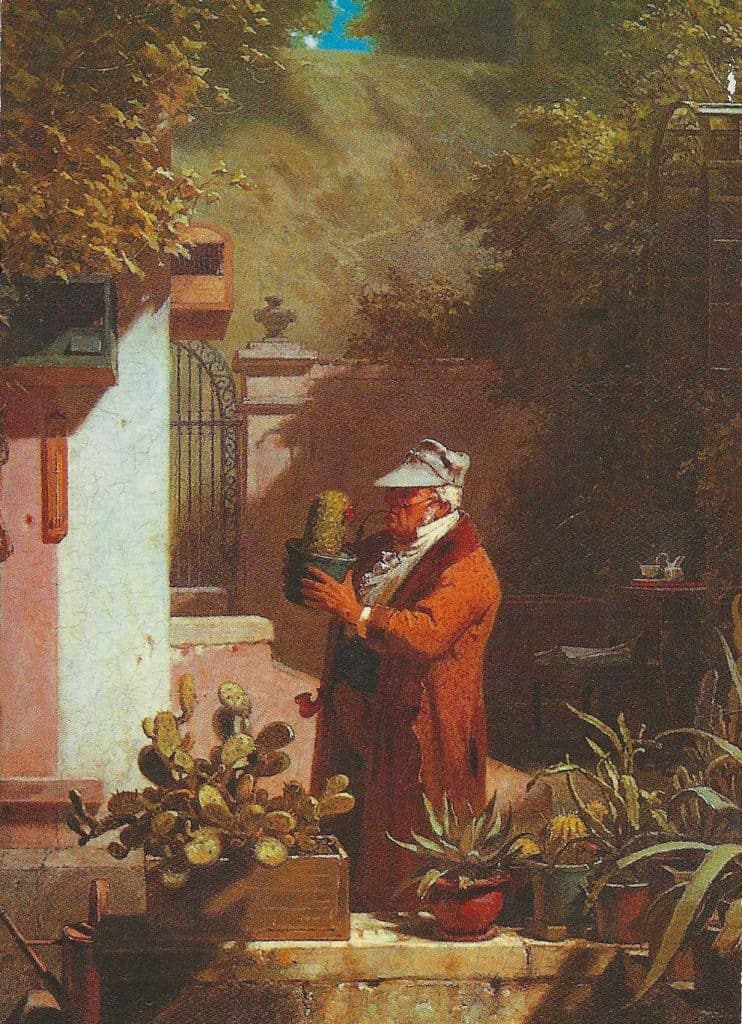
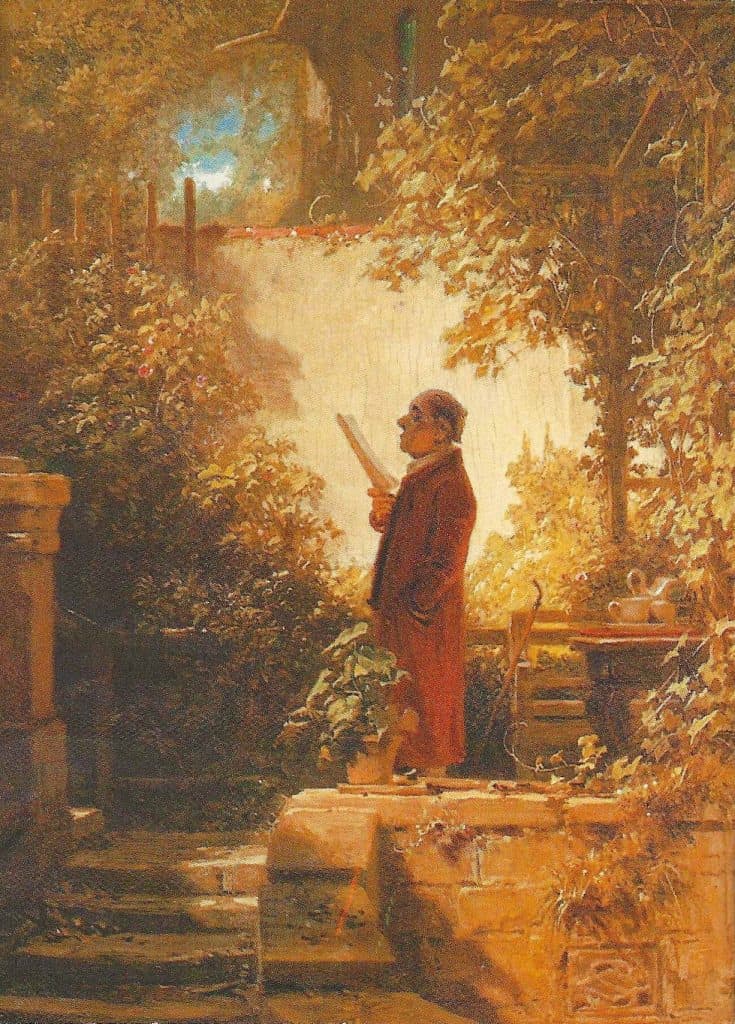
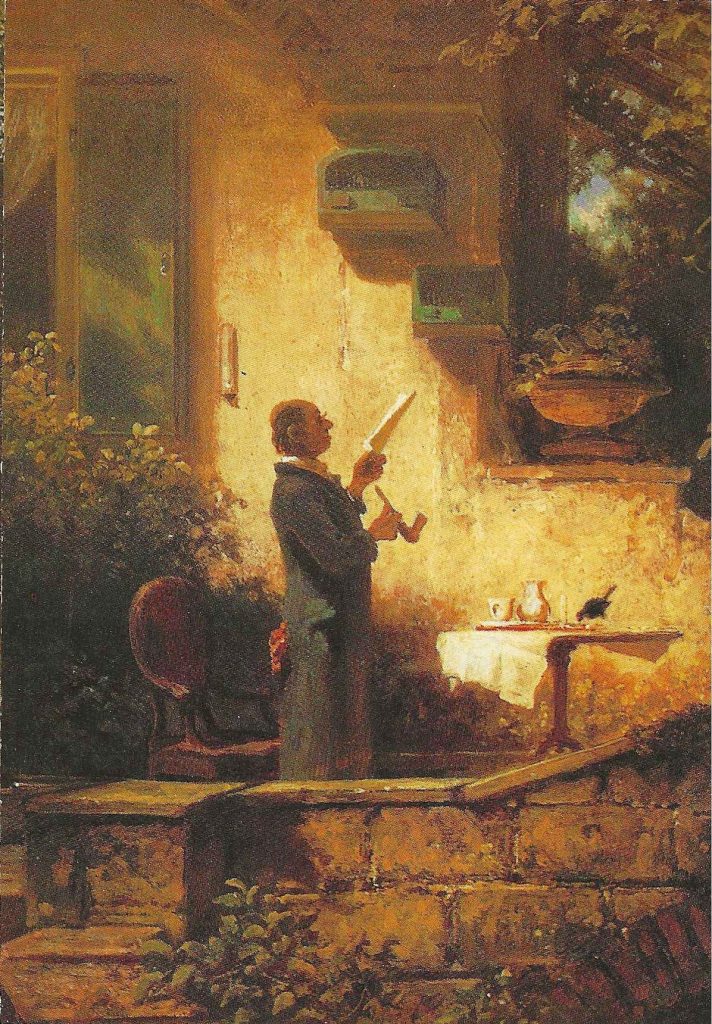
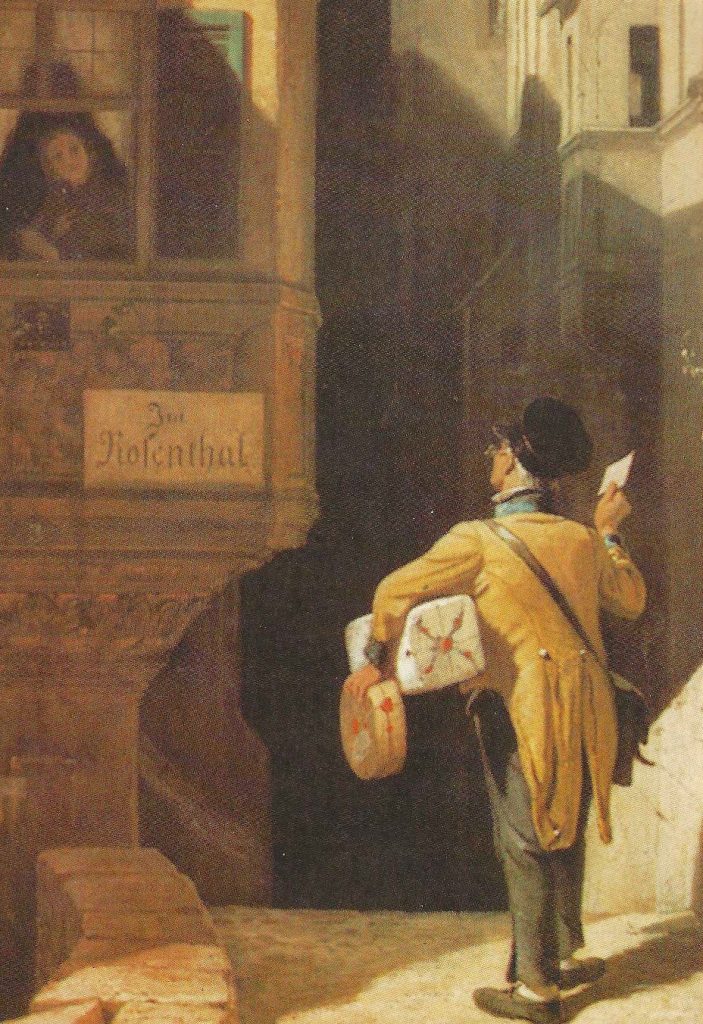
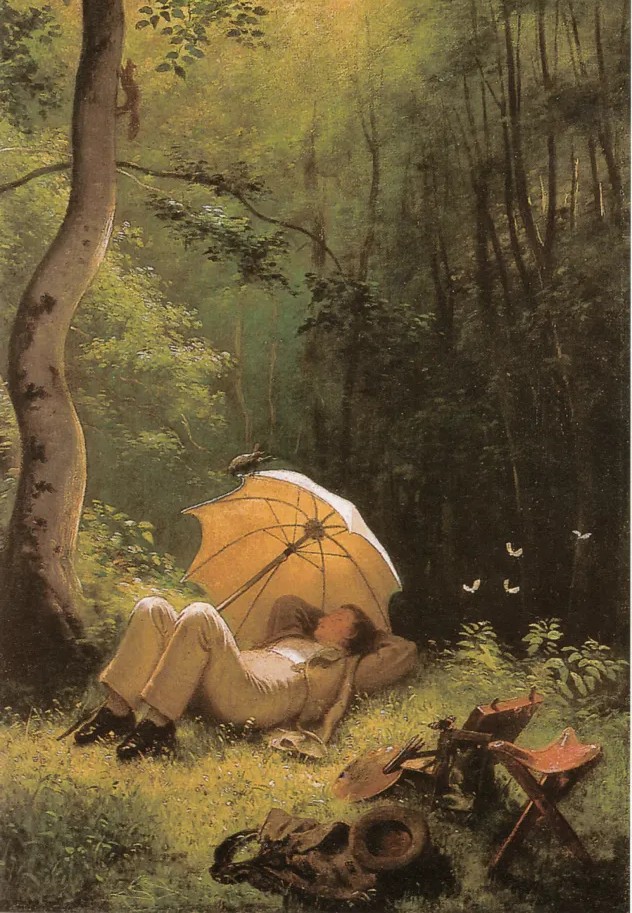

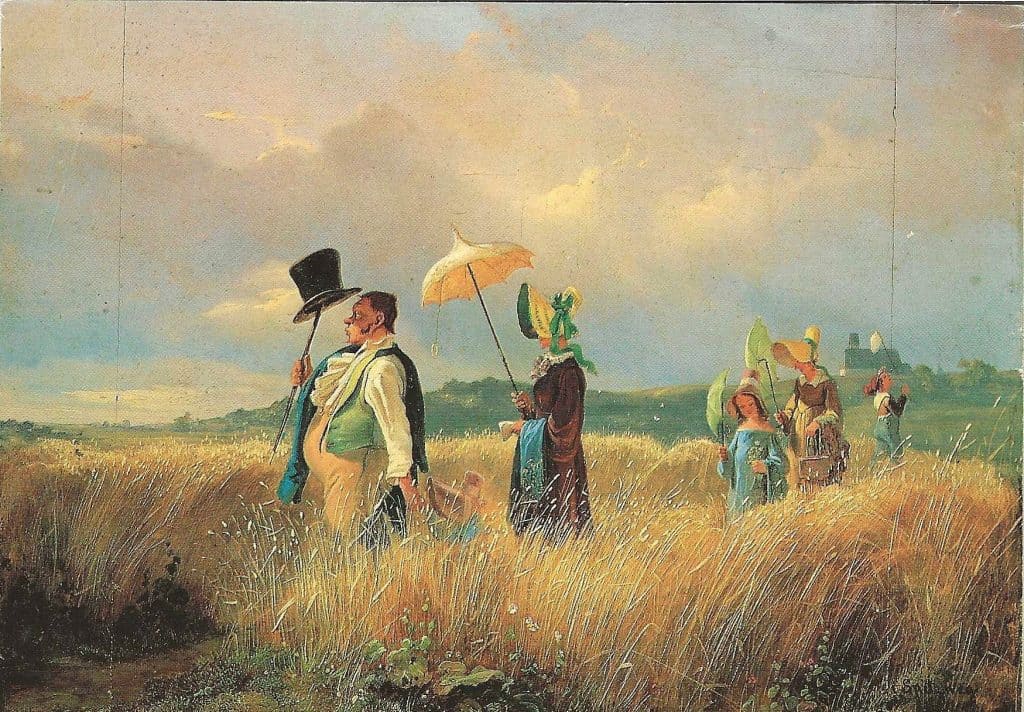
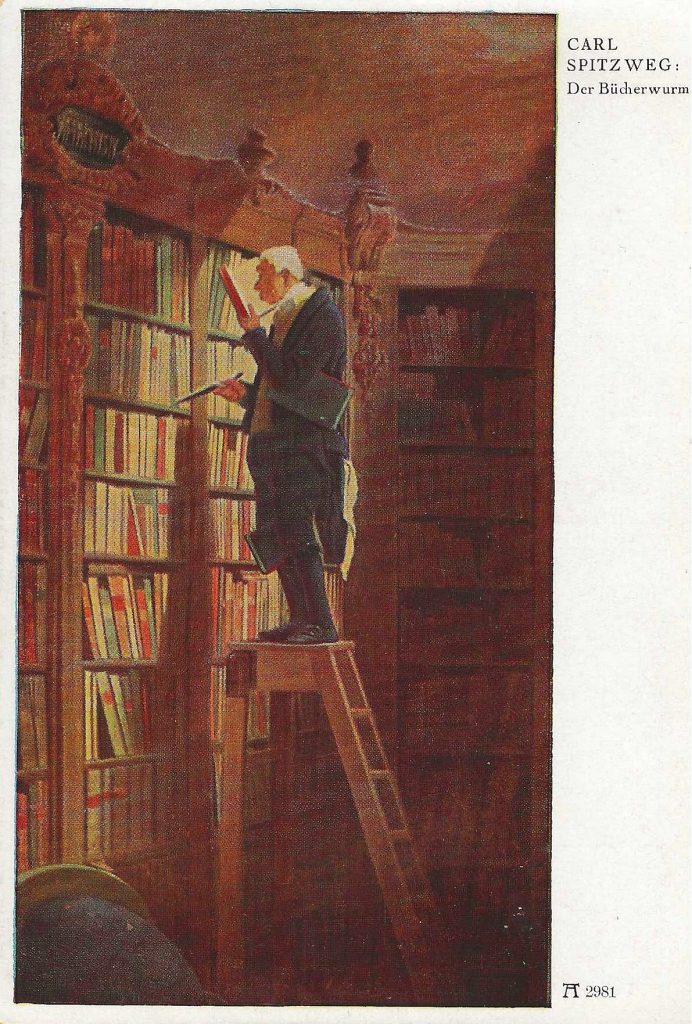
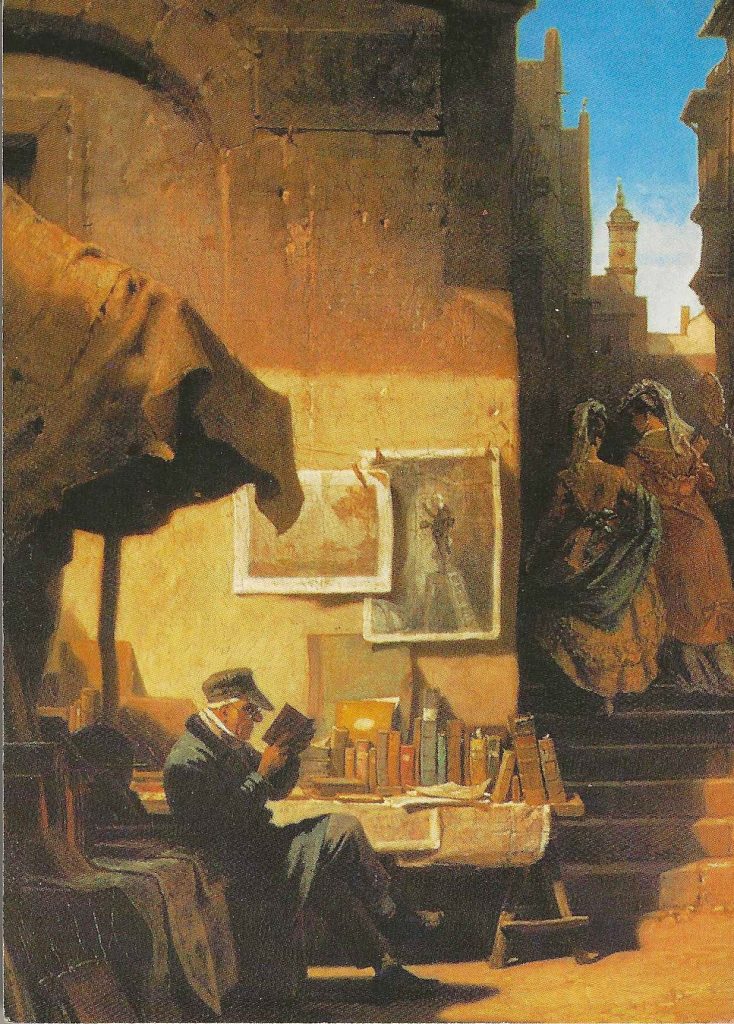
I didn’t think that I had ever seen any of Spitzweg’s work before, until I had read almost down to the very end of your article but The Bookworm appears on my husband’s bookplates.
I have never heard of this artist, but his subjects are fun and his use of light is extraordinary. Thanks for sharing his story
The Biedermeier period was named after Papa Biedermeier, a comic caricature representing a man of middle-class comfort.